President Twitter Fingers had the Center for Disease Control send a mailer to promote himself of course. It showed up in my mailbox yesterday touting his “coronavirus guidelines for America.” But we know what he really means. The caricature is by Donkey Hotey.
Modern Life
This 13-second video has been making the rounds. I nearly fell down laughing.
In a Time of Crisis . . .
. . . here’s a tune to calm the nerves. It’s called “My Fate Is in Your Hands,” composed by Fats Waller and played by Dick Hyman. An anecdote goes with it. But first the tune.
Artaud for Our Time
“And I told you: no works of art, no language, no words, no thought, nothing. Nothing except a sort of incomprehensible and totally erect stance in the midst of everything in the mind. And don’t expect me to tell you what all this is called, and how many parts it can be divided into; don’t expect me to tell you its weight; or to get back in step and start discussing all this so that I may, without even realizing it, start THINKING.”
‘Where the Press Is Free . . .
. . . and every man able to read, all is safe.’ — Thomas Jefferson
‘Would that it were so.’ — Straight Up | Staff of Thousands
What . ? . No Patti Smith?
Just kidding . . .
Last Breath, Memorialized
Cold Turkey Press has printed a card of this photo and poem in a limited edition.
‘I Do Not Think. I Am Thought. I Am Thought in Action.’
I am that I am that I happen. /
I am a resultant. /
—a coincidence of fields. /
Am is my here. /
That is I there. /
What am I here for? . . . /
I am here to go. /
When the magnetic fields shift / There / is no here. / I am gone.
King’s Dream Deferred
Whatever the blowhard president of Trumpistan says in his official proclamation to honor Martin Luther King Jr., rest assured it is phony to the last pixel and not worth the time to read it. (To save you the trouble, here’s a sample: “My Administration works each day to ensure that all Americans have every opportunity to realize a better life for themselves and their families regardless of race, class, gender, or any other barriers that have arbitrarily stood in their way.”) And for the record let’s not forget that when King made his historic “I have a dream” speech from the steps of the Lincoln Memorial in 1963, it was hardly noticed by the nation’s most widely circulated newspapers. Have a look at King delivering that speech and be reminded of what they missed.
Kurt Wold: ‘Stradoferous’
“I dreamt I could play the bicycle. This performance artwork plays with a number of themes, not the least of which is the continual contemporary pressure to present oneself as larger-than-life, in the hope that one might be noticed in a distracted culture. Of course the work also revels in those distractions.” — Kurt Wold
If This Was an Actual Real-Time Photo . . .
. . . which it was . . . You have to wonder what floor can I get out? [Insert punchline, pls.]
A Poem and Its Genesis: Malcolm Ritchie’s ‘Writing It’
… and my hand held up against the sky / as if a naked bird singing in sign language / to an empty page lying somewhere / in an uninhabited house where / only dust is moving / from room to room … — from “Writing It”
And From the Outlaw End of the Writing Spectrum
“At age 84, Plymell continues to write, publish and perform—“doing nuttin”, as he says—from his home in Cherry Valley, New York. His activities keep Plymell in steady correspondence with a crowd of like-minded hellions, including rockabilly’s Bloodshot Bill, Sonic Youth founders Kim Gordon and Thurston Moore, bassist Mike Watt, filmmaker Mark Hanlon, guitarist Bill Nace, photographer Philip Scalia and musicologist Byron Coley. Plymell and his wife, Pam, first happened upon Cherry Valley in late 1969 in coming to visit Allen Ginsberg and Peter Orlovsky at their East Hill farm. Moving there for good in early 1970, the Plymells have set into adding to their immense creative legacy.” – Benito Vila
Poetry in Prose: Cheever’s Domestic Confessions
‘I make no headway, and yet it seems best to come here every day and try. It is not easy. I have had winters before and will have them again, and do not seriously doubt that they will end—the winters—but it is not easy. I am reminded of the weeks and months in Rome when I saw nothing with the right eyes but a cobweb gleaming in the sunlight and an owl flying out of a ruin.’ — John Cheever, from his journals
A Blogpost for the Ages
This was it, Jan. 12, 2017 . . . It began like this: ‘On the day Twitter Fingers is sworn in as the preening el presidente of a tin-pot United States of Trumpistan, enabling him to run the country like a division of his family-held company . . . ‘ and continued with a 17-minute recording of Heathcote Williams reading his poem “The United States of Porn.” That reading alone puts the blogpost in a class of its own.
Before the Day Is Over . . .
… and the occasion becomes a nothing burger, here are a few greetings for the New Year … from Jürgen Schneider, Frank Diersch, Gerard Bellaart, and Charles Plymell.
Wishing You a Happy New Year for 2020
me?
i am trying to spend
a quiet holiday
at home,
glad for the chance
to read, write, play
a bit of pyannah,
and generally
enjoy not being dead.
yet.


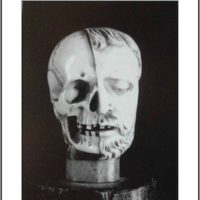
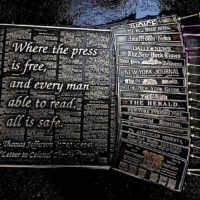


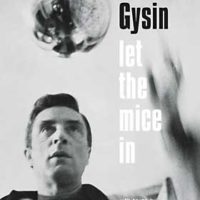
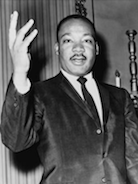


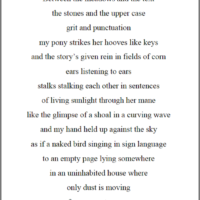

![Heathcote Williams [Photo: JH, 2013]](https://www.artsjournal.com/herman/wp/wp-content/uploads/2017/07/heathcote-williams-photo-copy-200x200.png)

